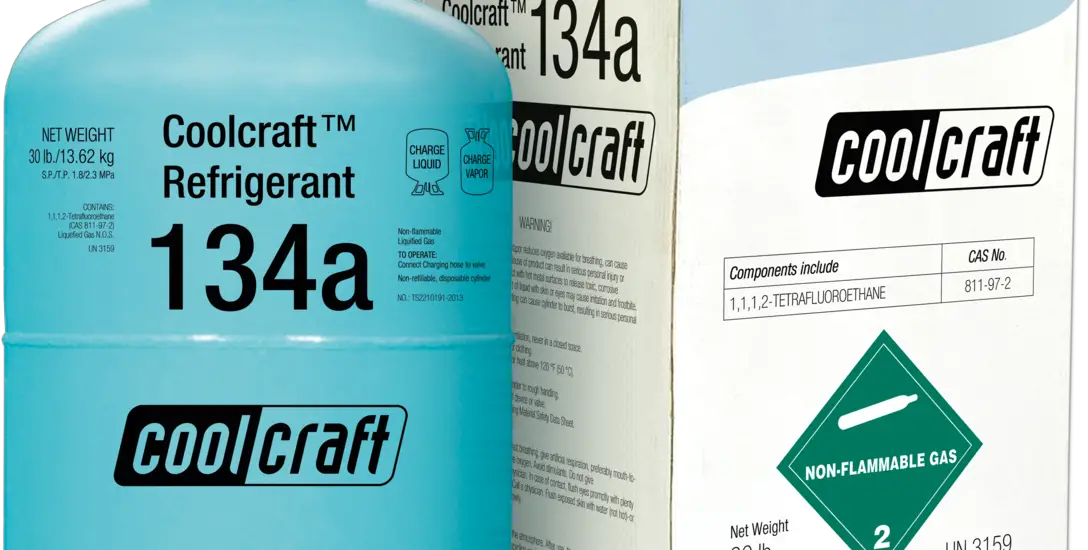Properties of a refrigerant – what’s the big deal, right? Well, folks, that’s what we’ll be discussing in detail in this article.

Table of Contents
Fundamental Properties of a Refrigerant
So what makes a refrigerant the king of cool? There’s a bunch of science-y stuff that comes into play, and it’s not rocket science, promise. We’re talking about physical properties, chemical properties, how it deals with Mother Earth, and if it plays safe. Let’s break it down.
Physical Properties of a Refrigerant
Physical properties are like the biceps and triceps of a refrigerant. How much can it lift? How flexy is it? Boiling point, freezing point, critical temperature, and pressure – are the muscles refrigerants flex.
Boiling and Freezing Points
Imagine a water balloon fight in the summer – you wouldn’t want those balloons to freeze or take forever to splash, right? Same thing with refrigerants – you want them to boil and freeze at just the right temperatures to keep the chill party going. It’s kinda like making sure your ice cream is perfectly soft, but not melted!
Critical Temperature and Pressure
These two are like the dynamic duo, Batman and Robin of refrigerants. Critical temperature is the max temp where they can condense – think about pressing the pause button on boiling water. Critical pressure is like the crowd at a rock concert, the higher it is, the more they can cram into a space. Together, they make sure your refrigerant doesn’t go bonkers under pressure.
Chemical Properties of a Refrigerant
Now we’re getting into the DNA – the stuff that makes a refrigerant who it is on a molecular level. Like whether it’s a well-behaved child or a rebel without a cause.
Stability
Stability’s the stage where a refrigerant gets its act together. Nobody wants a refrigerant that’s like a soda can that’s been shaken too much. Kaboom! It’s gotta be calm, cool, and collected, and not break down or react with other stuff inside your cooling system. This is crucial for longevity and smooth running.
Reactivity
Remember when we were kids, and we mixed stuff together just to see what would happen? Fun times! But, refrigerants with a low reactivity are like well-behaved grown-ups. They don’t go mixing with others and causing a ruckus. The less reactive, the safer and more reliable they are.
Environmental Properties of a Refrigerant
Is your refrigerant a tree-hugger or a planet polluter? Let’s talk green – or not-so-green – attributes.
Global Warming Potential (GWP)
GWP is a measure of how much heat a gas traps in the atmosphere. It’s like putting extra blankets on our planet, and not in a cozy, winter night way. Lower the GWP, better for Earth. Your refrigerant should be chill, without making the Earth hot under the collar.
Ozone Depletion Potential (ODP)
ODP is like the naughty score for a refrigerant. It measures how much damage it can do to the ozone layer – our planet’s sunglasses. We want refrigerants that respect the ozone layer, not poke holes in it. So lower ODP? Thumbs up!
Safety Properties of a Refrigerant
It’s all fun and games until someone gets hurt, right? Safety properties of a refrigerant include toxicity and flammability.
Toxicity
A toxic refrigerant is a big no-no. It’s like having a pet snake that could bite you at any moment. Non-toxic refrigerants are the way to go. Remember, safety first!
Flammability
Playing with fire isn’t cool, and that includes refrigerants. Flammable ones could turn a small problem into a towering inferno. So, it’s better to stick with those that won’t turn your fridge into a fire-breathing dragon.
Check out these other related articles...
Refrigerant Pressures: Your Ultimate Guide to Measure, Interpret and Handle Them Safely
Top Up Refrigerant Gas: Your Ultimate Guide for Cooling Efficiency
Refrigerant Orifice: Your Key to Understanding and Mastering Refrigeration
Reclaiming Refrigerant: Your Complete Guide
Best Refrigerant for Low-Temperature Applications: A Comprehensive Guide
Properties of an Ideal Refrigerant
So what would the resume of a superhero refrigerant look like? Let’s picture our ideal candidate.
Optimal Physical and Chemical Properties
A top-notch refrigerant would be like a star athlete – physical and chemical properties in peak condition. It’d have just the right boiling and freezing points, stay calm under pressure, and wouldn’t cause a fuss by reacting with others.
Minimal Environmental Impact
The dream refrigerant is also a friend to Mother Earth, like that friend who always recycles and turns off lights when leaving the room. Low GWP and ODP are the names of the game here.
Safety Considerations
Lastly, an ideal refrigerant is safe as houses. It’s not toxic or flammable – basically, it doesn’t bite or spit fire. A cooling companion that won’t turn on you.